At present, there are many different types of cranes, depending on where they work, the loads they have to hoist and the tons they support, as well as the mechanisms they use (pulleys, counterweights, rails, wheels, etc.). The most common cranes are:
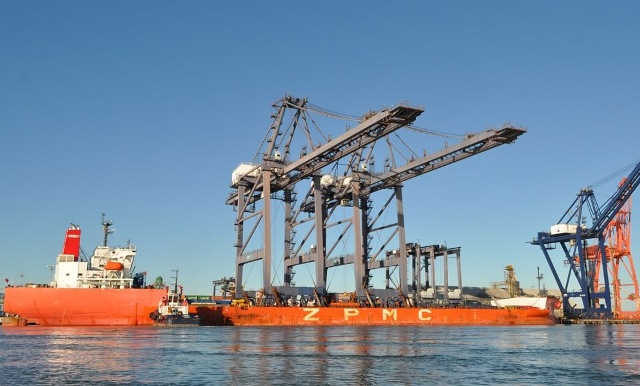
Port Operations
Efficiency is a decisive factor when handling cargo in both seaports and in inland ports. The loading and unloading times must be minimal, the logistics infrastructure must be flexible and the price-quality ratio must be optimal.
All these elements make port facilities stand out in the competitive international panorama.
The port equipment contributes enormously to the success of these facilities with a range of products that offers specific answers for all types of cargo. The most advanced technologies and the highest levels of quality guarantee the maximum performance and the highest availability of the equipment.

Cargo Cranes
Customized solutions for loading and unloading vessels of any size with port cranes:
- cranes for containers,
- mobile port cranes,
- crane installed fixedly on a foundation column,
- Translation cranes on rails.
Each of them includes a variety of optional equipment to adapt them to the nature of the work with the highest quality and availability of a first class product.
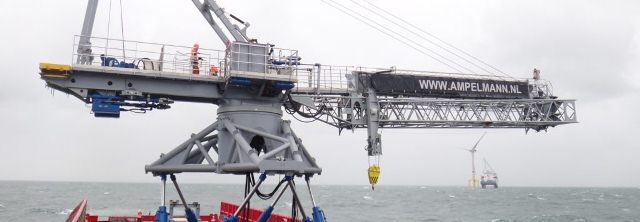
Stacking crane
- Stacking cranes on rails
- the stacking cranes on container tires,
- the bridge elevators and
- Reachstacker
They stand out for their technical superiority, which is demonstrated thanks to the precise handling, the synchronized movements and the great speed of work offered by these machines.
In addition, with very low costs per container. These first quality standards allow the team to operate safely 24 hours a day
Load handling
It also occupies the first position in flexibility: for general cargo and bulk, it offers a range of specially adapted equipment, from handling machines to cranes on chains, hydraulic excavators, loaders on chains and on tires.
The fast operating cycles and the high handling volume make these machines highly profitable.
Types of cranes used in shipyard
Different types of cranes used in ports
Ports have different lifting and lowering mechanical devices, some of which include cranes. These machines are capable of lifting different weights for and from various heights and from any boat or ship. To work effectively, hoists use cables and pulleys. There are different types of cranes used in ports, and which include the following names.
Floating Crane
These are vessels that consist of winches attached to them. They are mostly used in the construction of harbours and bridges.
These devices are also used in loading and unloading of unusually heavy objects in the port. Vessel hoists have the ability to lift over ten thousand tonnes.
The floating type can also be used to recover sunken ships by use of the crane hook. Another important feature is that these vessels can move from one place to another. This means that they are flexible enough to move objects to designated locations. Some common types include semi-submersible and sheer legs.
Bulk Handling Crane
In ports, the most efficient and reliable method of handling the numerous amounts of bulky goods is by the use of grabbing hoists, which are operated through riggings. Bulk-handling winches are very efficient when it comes to controlling such materials as gravel, coal, and foodstuffs like grain.
Basically, they are useful in loads that prove difficult for man and other machines to handle. These devices are available as mobile or fixed devices. Bulk-handling machines can help a crane operator to handle about 2,300 tonnes every hour.
Gantry Crane
Gantry cranes can be used in different industries. These machines are available in fixed or adjustable heights and are either made of steel or aluminum, depending on their purpose.
The basic design of these machines features two upright beams that are attached to each other by a horizontal one. These two upright beams are linked to two A-shaped frames, which have wheels attached to them.
This feature makes them movable and portable. The smaller version of gantry cranes is mostly used to move larger objects in the construction industry and in docks to move containers. In other instances, larger versions of this lifting device are used in such working areas as warehouses.
Hammerhead Crane
This is one of the most common types of cranes used in ports and it’s also known as a giant cantilever. Hammerhead winch consists of a tall steel tower, which holds a horizontal double cantilever fitted with a lifting trolley that has a crane hook. The jib extends backward, an important aspect for weight balancing.
Note that the hammerhead wrench system is made with a racking motion that allows back and forth movements of the trolley. This motion also prevents interference with the height of the load. These cranes are also created in huge sizes and can lift loads of over 350 tones.
Tower Crane
This is a modern type of balance wrench that is usually fixed on the ground. Tower cranes give a good combination of lifting capacity and height. They are mostly used to lift loads to very high heights, especially in shipyard constructions and to lift containers in havens. Extremely tall cranes can reach up to 1,000 meters high with a base of about 3.5 meters.
Deck Crane
A deck crane can be found on a ship or boat. They are mostly used for cargo operations such as loading and unloading. These machines are also very useful for goods retrieval on shores that do not have unloading devices. Most of them are hydraulically operated. This means that they either use the electric or diesel-hydraulic system.
Types of cranes used in ports
Other types of cranes used in ports include:
Rough Terrain Crane
Normally, this is mounted on a carriage that is fitted with four wheels and is designed for places with rough terrain. When hoisting, the outriggers extend both horizontally and vertically to balance and keep it stable.
These rough terrain hoists use a single engine to power both its winch and undercarriage. The ability of this machine to maneuver through rocky and gravel filled places makes it very effective for carrying heavy loads through construction sites.
Overhead Crane
This device is also called a suspended crane. Although they are mostly used in factories to lift heavy loads, a goliath crane is also used in a shipyard. They consist of hoists that are set on trolleys.
The trolley is fitted in a way that allows it to travel along one or two beams. It also moves at angles in the same direction along the ground and elevated level.
Overall, these mechanical devices that are very interesting and powerful machines. A crane operator is highly trained to control and maintain these devices. Due to their ability to lift heavy and bulky loads for great heights, the gadgets are very useful for construction and port operations.
How tall are container cranes?
Megaships can be up to 1,300 feet long and carry nearly 23,000 cargo containers. Containers are stacked up to 12-high above deck on the largest vessels. Taller cranes are required to reach the top of the stacks.
The fast and efficient transfer of cargo between ships and land-based modes of transport is the goal of ports throughout the world. The TTS range of port equipment offers a number of flexible options for access and for the management of traffic when loading or unloading ships.
The Loaded Container Handler is the king of the port. Popular in ports, terminals and shipping yards, the Loaded Container Handler will provide fast lifting cycles, high stacking and reduced freight costs.
A terminal is a place where the loading and unloading of people or goods take place e.g. a bus terminal or a train terminal. Marine terminals just form a part of the port where goods and cargo can be loaded into a ship and unloaded in case a ship comes to the port.
The most read
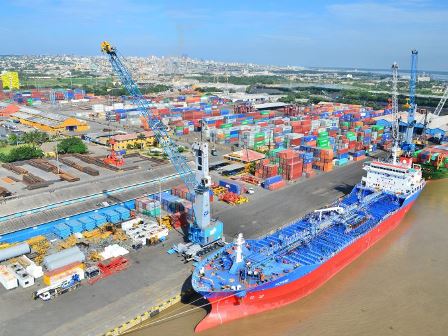
Types of Port Cranes
One of the basic infrastructures for handling merchandise and ships are all types of port cranes.
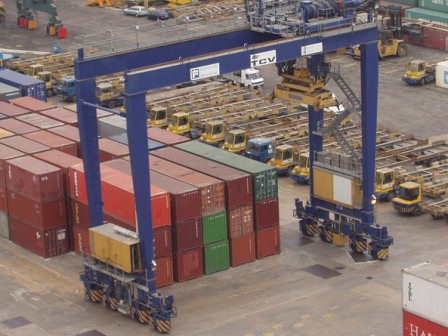
RTG Crane
Rubber Tyred Gantry Crane, Container Terminal, what is an RTG crane? RTG crane parts name, RTG crane manufacturers, specification.
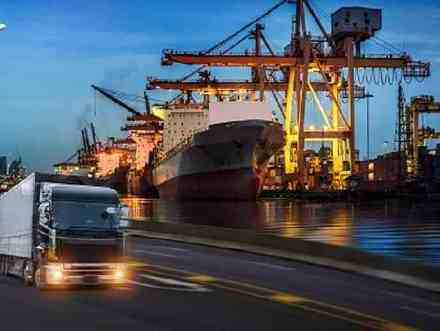
Types of Sea Ports
A container port or container terminal is a facility where cargo containers are transshipped between different transport vehicles, for onward transportation.
